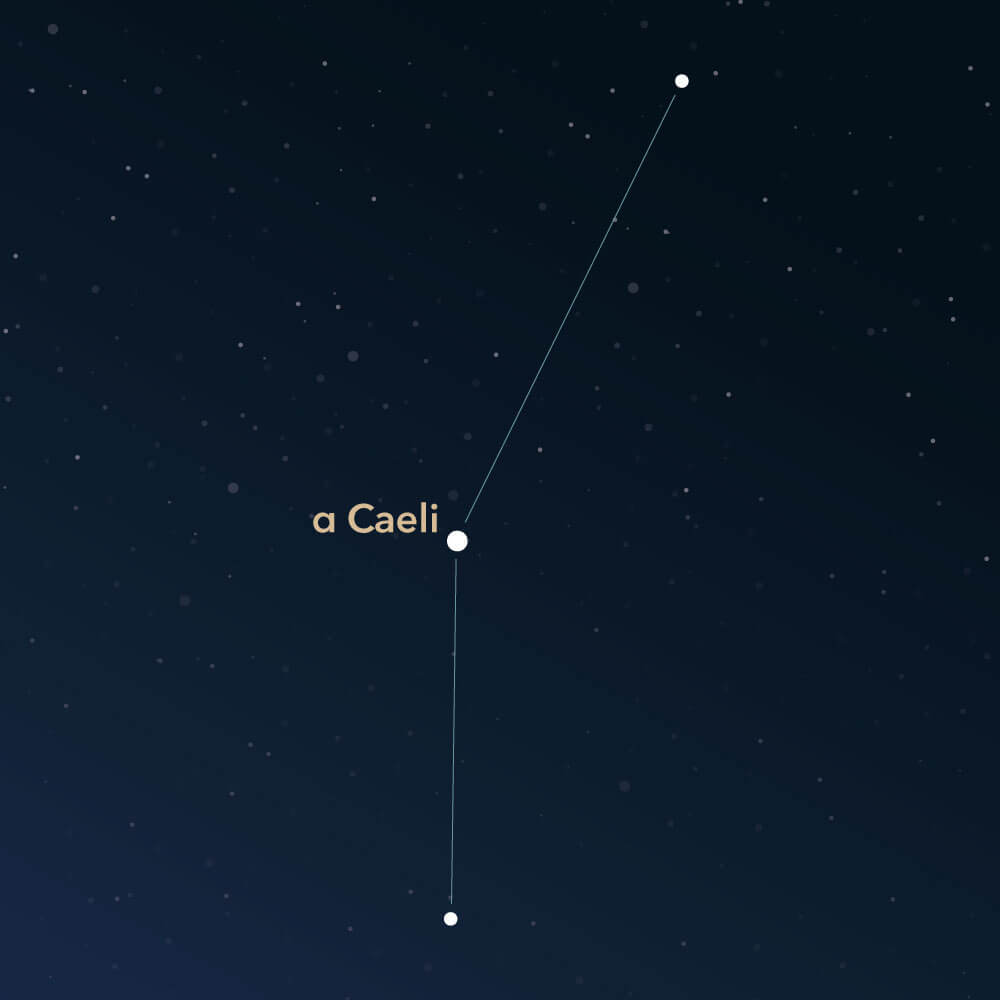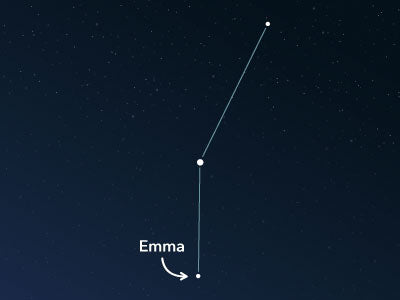The constellation Caelum
Characteristics
- Other names / Symbolism
- Chisel, Engraving Tool
- Hemisphere
- Southern hemisphere
- Visibility
- December - February
- Area
- 125 deg²
- Brightest star
- α Caeli (HIP number 21770)
- Specialties
- Barred spiral galaxy

The Caelum, Latin for chisel or engraving tool, is a very small and inconspicuous constellation of the southern sky. It is one of fifteen constellations determined by the French astronomer Nicolas Louis de Lacaille.
Hemisphere, visibility, and area
The Caelum is located in the south and can be seen from both hemispheres. It is visible from all locations south of the equator and only up to the 42nd parallel north. That is roughly equivalent to regions such as Rome in Italy or Detroit in the US.
The best time to observe the Caelum in the night sky is from December to February, with it being exceptionally high in the sky in January.
The star constellation has an area of about 125 square degrees, making it one of the ten smallest existing constellations. It is ranked 81st compared to the other 88 constellations.
The Caelum is visualized as a curved line, usually connecting three or four of the main stars.
Seeing the constellation in the night sky is not easy, as only two stars are larger than the fifth magnitude. The brightest star is α Caeli (Alpha Caeli), which is a double-star system with an apparent brightness of about 4.45. The star is located at a distance of about 72 light-years from earth.
To find the Caelum in the night sky, it is helpful to look for neighboring constellations. To the east, it borders the particularly large Eridanus, as well as the Horologium. Other neighbors include the Dorado, the Pictor, as well as the Columba and the Lepus.
Specialties in the constellation
There are few discovered deep-sky objects in the area of the Caelum.
The best-known one is the barred spiral galaxy NGC 1679. It was identified by the British astronomer John Herschel in 1835. It has an apparent magnitude of 11.4 and a diameter of about 40,000 light-years. Its distance from the Milky Way is estimated to be 40 million light-years. It is located in the northern part of the Caelum and cannot be observed with the naked eye due to its low brightness.
History
The Caelum constellation was named in the 18th century by the French astronomer Nicolas Louis de Lacaille. After the invention of the telescope, he named several constellations of the southern sky that had not been recognized before. For this, he measured the positions of around 10,000 stars from the Cape of Good Hope near Cape Town in South Africa.
Unlike the 48 constellations of ancient times, which bear names of mythological figures, he often used terms of technological innovations for the new constellations.
The Caelum was utilized as an engraving tool to produce steel and copper engravings. For example, printing plates for books were created using a chisel.
PublishedRead more interesting articles

An overview of all 88 constellations
Learn more about all 88 constellations and read interesting information about the mythology, visibility, and features.

Planetarium App
Discover the night sky with our planetarium app!
Available for iOS and Android.

Name a star in the constellation Caelum
Name a star in a constellation and create something that lasts for eternity.